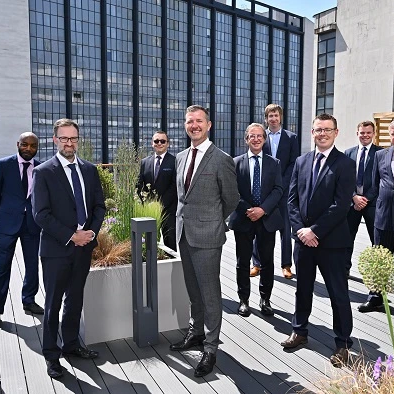In this guest blog Kevin Harris of Utility Collections looks at the challenges the commercial energy industry has faced recently, what impact they have had and what he believes the future holds.
It’s safe to say the commercial energy industry has been one of the more interesting (I use that word advisedly!) sectors over the past few years. With the dramatic shift in consumption profiles due to WFH during Covid to the shortage of supply as we came out of lockdown two, the market implosion which saw twenty‐six (and counting) suppliers who ceased trading and customers becoming part of the Ofgem ‘supplier of last resort’ (SoLR), through to the awful situation currently unfolding in Ukraine. All this has created an uncertainty which we haven’t seen for a generation and may end up being on the scale of the financial crash of 2008 in terms of its impact on hard working people.
Throughout all these challenges, UK PLC has, for the most part, remained resilient. With some of the lowest unemployment in the G20 and record job vacancies, the outlook should be positive as we move into the post‐Covid recovery. However, and it’s a big however, the cost‐of‐living increases which are being felt across the country are beginning to bite. Adding this to the challenges above, it becomes a melting‐pot of cost increases, lack of supply, reduced supplier choice and general uncertainty. This has the potential to cause paralysis to businesses in many sectors.
I’ve broken down each challenge to give you my thoughts on the impact, what the future holds and what can be done to mitigate them.
Let me start by addressing the elephant in the room – energy suppliers in general and commercial suppliers in particular are not the most loved companies in the world. Whether they are seen as ‘corporate fat‐cats’ or just out to make a quick buck, they are rarely viewed with any affection. I have worked for suppliers, distributers and consultancies before co‐owning Utility Collections and I have rarely seen anything other than people trying to do their best for business customers. Having said that, is there more we can do collectively to improve the service and communication which customers receive? Of course we can.
Covid and WFH
With the sudden and significant impact of the WFH directive in 2020, office buildings stood empty and the wider town and city centres became like ghost‐towns. This unexpected migration to home working shifted the energy consumption to domestic meters and left many businesses counting the costs. When large users agree their energy contracts, many of them have what’s called a tolerance factor. This is a commitment to use normally between 80%‐110% of the agreed purchase volume which gives suppliers some certainty when they purchase and trade on the markets. As businesses consumption dropped through the floor, many were left with penalty charges to their supplier as theirs dropped below the agreed threshold. Many, understandably, argued that they could/should not be liable due to the circumstances and many people would agree. However, that would leave suppliers carrying the financial burden which to many was untenable.
As the desire for continued WFH or at the very least a hybrid model, the volume and shape of future energy use has changed forever. With declining volumes, even in a stable marketplace, prices would be expected to increase. Given the volatility of the past 18 months, this has become exaggerated.
Loss of suppliers in the market
For over decade the industry regulator Ofgem has actively encouraged new market entrants. New suppliers, without the legacy cultures and new technologies, have driven up customer services levels
and driven down the cost to serve. Many have reinvested in developing strategies around selfservice, ‘green’ tariffs and further innovation. Don’t get me wrong, they didn’t do everything right but it drove the bigger suppliers to change in order to keep the customers they had. In turn this led to consolidation with some of the bigger suppliers in order to best serve their customers – on the face of it a win‐win.
Rewind to the middle of 2021 and we saw gas prices 400% higher on the wholesale markets, something with which many newer suppliers couldn’t cope. These were not badly run businesses, far from it, but many were exposed to both the domestic and commercial markets. Suppliers had the flexibility to increase prices for commercial users (depending on their contract status) to mitigate these rises but with the energy price cap for domestic customers, they were forced to sell energy for less than they paid for it. As we all know, you won’t stay in business for long doing that.
Supplier of last resort (SoLR)
Originally implemented in 2003, SoLR was introduced to protect customers of a failed energy supplier. The policy ensured that customers’ supplies were not interrupted or lost and provided continuity should their supplier fail.
Although customers supplies are protected their commercial agreements with suppliers are not, this means they move onto a default rate agreed with Ofgem and their new supplier. In normal circumstances this would mean a small increase and the ability to agree a contract with that supplier or move to another supplier under contracted rates. These may be by higher or lower than their previous contract depending on when their rates were agreed.
Given the market increases, these customers are now seeing significant increases in their rates, sometimes 300%+. This is not the SoLR exploiting the situation, this is the market we are in. Many customers have then looked to move to another supplier but this has its own challenges. Many suppliers are not pricing or contracting for new customers due to the uncertainty. For those who are pricing they are building significant risk‐factors into the pricing, credit criteria have tightened and require security deposits. It is the epitome of ‘rock and a hard place’.
What does the future hold?
Suppliers have the option to disconnect supplies that are in arrears but in the current climate this is fraught with issues. There are backlogs in the courts in order to obtain warrants and there are only
so many companies who can carry out this enforcement action.
A better way is to engage with an early intervention specialist who can work with the supplier and the customer to resolve the account arrears whilst maintaining the supply. This allows the customers
to trade their way out of the arrears. As soon as a supply is disconnected then the debt becomes more expensive and complex to collect.
Utility Collections has seen a constant increase in suppliers looking to engage with industry experts whose customer focused approach has seen significant results in a short space of time.
The market is likely to be in a state of flux for several years and we watch with interest as it develops.









